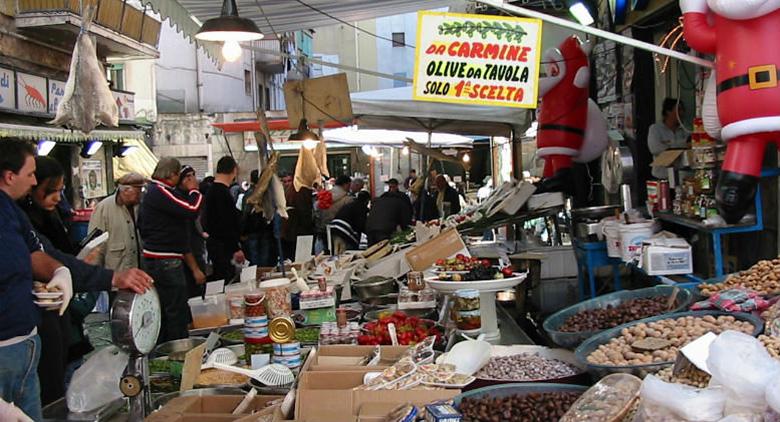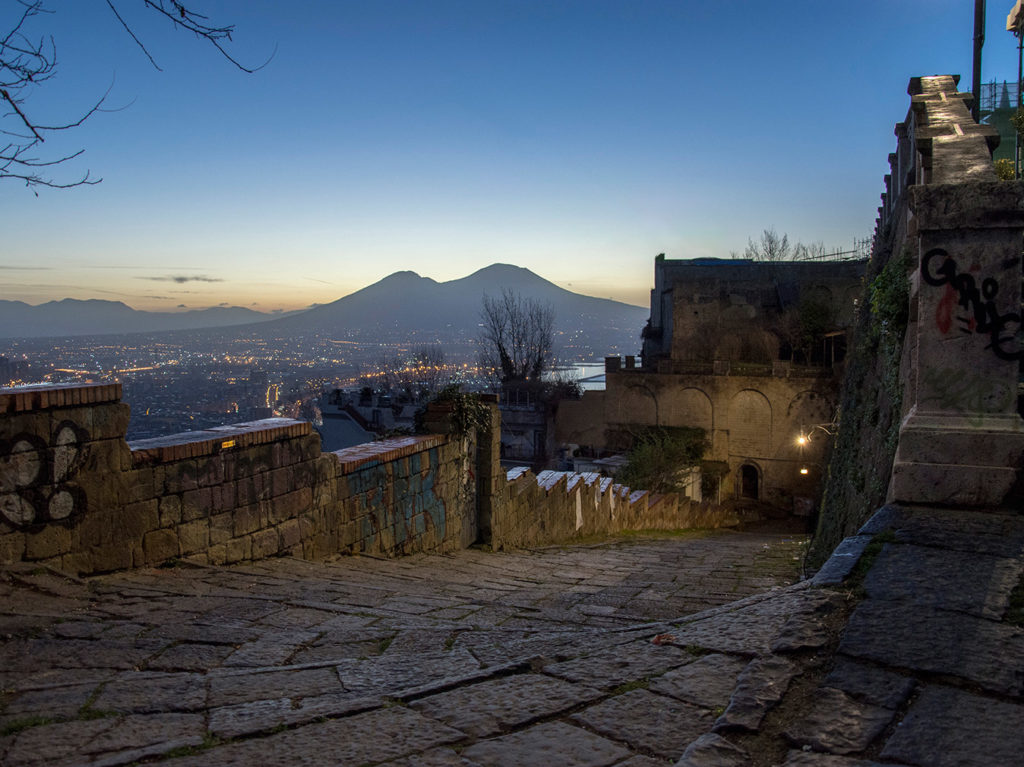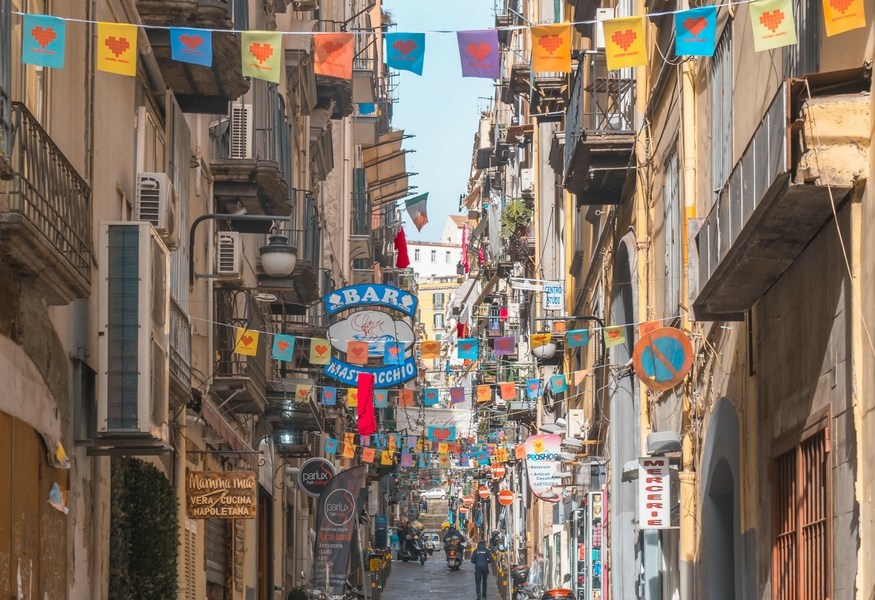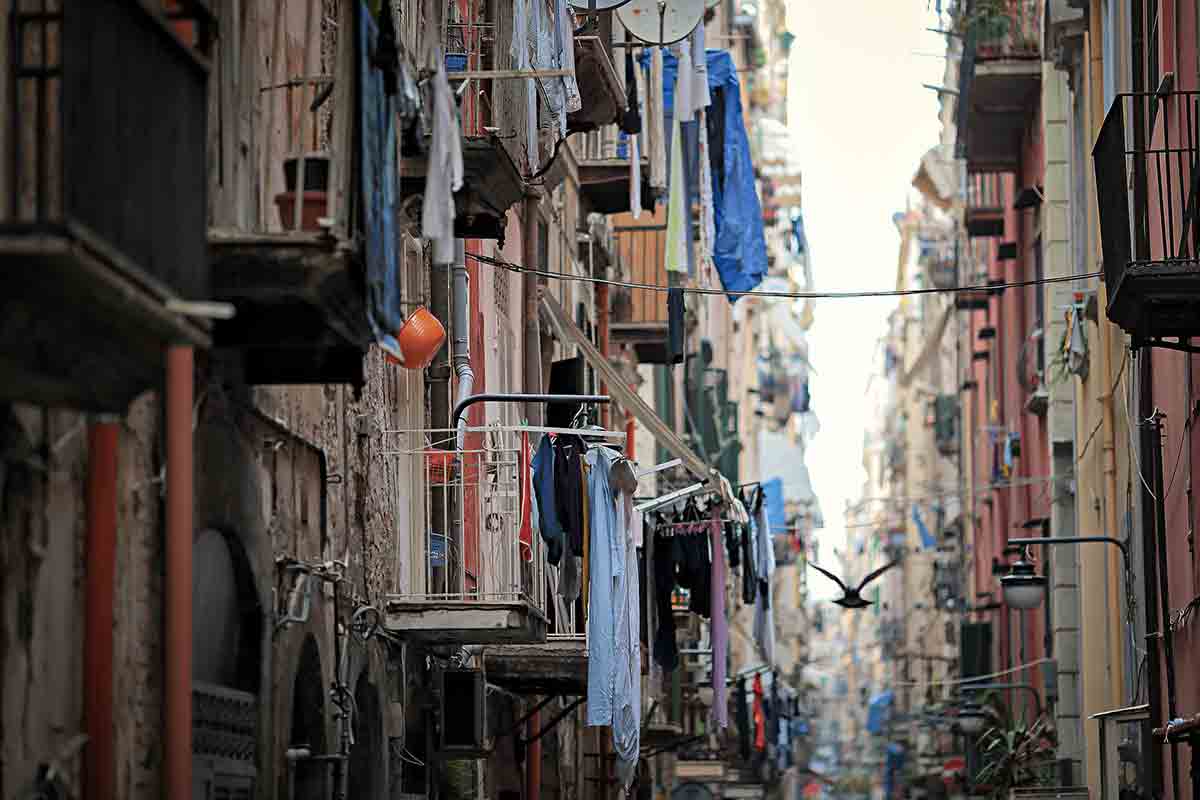The Quartieri Spagnoli (Spanish Neighborhood) have been painted for many years as a place to avoid, one of the most dangerous areas of Naples. Fortunately, in recent years, the Quartieri Spagnoli have been re-evaluated and have become one of the main tourist attractions of the city, a place made of narrow alleys, clothes hanging in the sun, small taverns, elements that best represent the soul of Naples and the Neapolitans.
Located close to the historic center of Naples, the Spanish Neighborhood arise in the 16th century as an area used by the Spanish soldiers during the occupation, the Spanish Neighborhood presented crime and especially prostitution, linked to the bad habits of the soldiers who lived there . Today the Spanish Neighborhood extend over three areas: San Ferdinando, Avvocata and Montecalvario. We offer you a series of activities and attractions to visit in one of the most beautiful and most characteristic neighborhoods of Naples.

Pignasecca market
A few steps from Via Toledo, there is the open-air market of Pignasecca. The name Pignasecca comes from "dry pine". Legend has it that, in about 1500, there was also a pine forest populated by many magpies in this place. The Pignasecca market is a folkloric painting of ancient Naples in which it is possible to admire stalls of all kinds: fish, fruit, vegetables but also fries and typical sweets as well as clothing and accessories. Located in Montecalvario, in the heart of the Spanish Neighborhood, the Pignasecca market is also an excellent option for dedicating yourself to street food made in Naples, our advice is to indulge in a typical "fried cuoppo", a portfolio pizza and taste the tripe in one of the historic kiosks in the area.

Murals
Among the narrow streets of the Spanish Neighborhood it is easy to come across a series of murals that tell the present and past history of Naples. An open-air art gallery that represents a godsend for the most curious photographers who want to capture the underground side that mixes with the historic architecture of the Spanish Neighborhood. "Vicolo di Totò" is the new name of Via Portacarrese, where numerous artists have left works dedicated to Totò and other great Neapolitan artists such as posters, murals and photos of Prince Antonio De Curtis. There is no shortage of works of art dedicated to Diego Armando Maradona.

Montecalvario church
The church of Santa Maria della Mercede in Montecalvario is one of the monumental churches of Naples, located off Largo Montecalvario. The church was built in 1560 by the noble Ilaria DâApuzzo for devotees to Saint Francesco. In 1677 the church was enlarged and remodeled in a typically Baroque style. The facade of the building, anticipated by a portal that opens towards the street and a staircase, dominates the whole square below. The church has a Greek cross structure, a single nave, a barrel vault and five side chapels on each side, in the apse there is the splendid high altar attributed to Cosimo Fanzago depicting the Immaculate Madonna.
Pedamentina
From Quartieri Spagnoli it is possible to reach the Certosa di San Martino, through an complex system of flights of stairs known as the Pedamentina. More than 400 steps to reach the Vomero hill and enjoy one of the most beautiful panoramas of Naples. The Pedamentina road was started in the 14th century to allow workers to transport the materials necessary for the construction of the Charterhouse, later it was used as a defense system against those who intended to besiege Castel SantâElmo. The climb can be tiring, but it is worth going along it to see a unique view in the world, in several places of Peramentina it is possible to admire the Bay of Naples in all its splendor.

Church of Sant'Anna di Palazzo
The beautiful church of Sant'Anna di Palazzo is located in Vico Rosario, was built to celebrate the victory of Lepanto against the fleet of the Ottoman army in 1571. The church, which can be visited today, is very different from the "Sant'Anna old âwhich was demolished in 1964 following the damage suffered by the bombings of the Second World War. This cult building witnessed some important historical events, including the baptism of the painter Luca Giordano and the marriage of the revolutionary Eleonora Pimentel Fonseca. Inside the church you can admire the stucco decorations dating back to the 17th century, as well as the majestic high altar designed by Domenico Antonio Vaccaro in 1729. An unmissable destination for lovers of art history.
Of all the activities and attractions of the Spanish Neighborhood, the most suggestive is undoubtedly that of "getting lost in the alleys". Put this way it could take a negative sense, but the beauty of the Spanish Quarters lies in the chance encounters, smells, noises and corners discovered by chance. Walking aimlessly through the narrow streets, under the sheets, is the best way to enjoy what is probably the most representative suburb of Naples that still manages to give life to a cross-section of monarchical Naples. Of course, a bit of caution should never be missing, as in any big city, but letting yourself be carried away by the popular atmosphere and the smell of coffee, can reserve great surprises.

